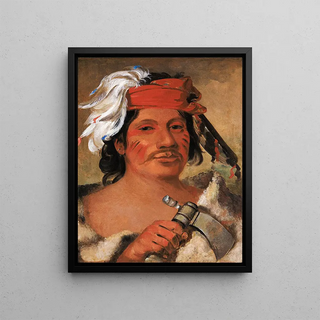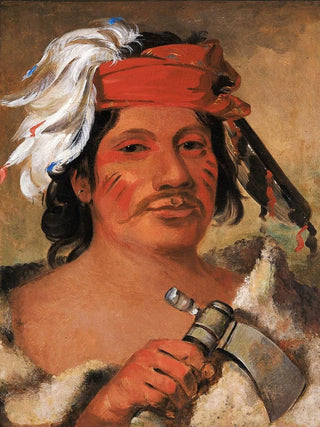Art print | Sénèque Steele, un grand libertin - George Catlin


View from behind

Frame (optional)
In the fascinating universe of art, some works stand out for their ability to capture the essence of an era and evoke deep emotions. "Sénèque Steele, un grand libertin - George Catlin" is one of those creations that, through its subject and execution, invites us to reflect on freedom and human nature. This painting, emblematic of Catlin's style, encourages us to explore not only the personality of the depicted character but also the historical and cultural context in which he evolves. The representation of Sénèque Steele, an intriguing figure of the 18th century, embodies the paradoxes of a society in full transformation, oscillating between the values of reason and those of passion. The art print of this work allows us to rediscover a key moment in history, while offering a new perspective on the life and work of the artist.
Style and uniqueness of the work
George Catlin's style is characterized by a blend of realism and romanticism, where portrait technique merges with a personal interpretation of subjects. In "Sénèque Steele, un grand libertin," the artist employs a rich palette and striking details that make the character almost alive. Sénèque's features are accentuated by subtle lighting, highlighting his piercing gaze and nonchalant attitude. Catlin succeeds in capturing the duality of his subject, both libertine and philosopher, through a composition that plays with shadows and light. This work, while a portrait, transforms into a reflection on the morals of its time, on the quest for individual freedom, and on the moral challenges faced by man. The singularity of this painting lies in its ability to transcend mere visual aspects to become a true mirror of the human soul.
The artist and his influence
George Catlin, artist and explorer, is recognized for his passion for Native American cultures and his desire to document their existence through his works. Born in 1796, he dedicated a large part of his life to traveling across the United States, capturing the beauty and complexity of indigenous peoples. His unique style, which combines precision and sensitivity, has influenced many.

Matte finish

View from behind

Frame (optional)
In the fascinating universe of art, some works stand out for their ability to capture the essence of an era and evoke deep emotions. "Sénèque Steele, un grand libertin - George Catlin" is one of those creations that, through its subject and execution, invites us to reflect on freedom and human nature. This painting, emblematic of Catlin's style, encourages us to explore not only the personality of the depicted character but also the historical and cultural context in which he evolves. The representation of Sénèque Steele, an intriguing figure of the 18th century, embodies the paradoxes of a society in full transformation, oscillating between the values of reason and those of passion. The art print of this work allows us to rediscover a key moment in history, while offering a new perspective on the life and work of the artist.
Style and uniqueness of the work
George Catlin's style is characterized by a blend of realism and romanticism, where portrait technique merges with a personal interpretation of subjects. In "Sénèque Steele, un grand libertin," the artist employs a rich palette and striking details that make the character almost alive. Sénèque's features are accentuated by subtle lighting, highlighting his piercing gaze and nonchalant attitude. Catlin succeeds in capturing the duality of his subject, both libertine and philosopher, through a composition that plays with shadows and light. This work, while a portrait, transforms into a reflection on the morals of its time, on the quest for individual freedom, and on the moral challenges faced by man. The singularity of this painting lies in its ability to transcend mere visual aspects to become a true mirror of the human soul.
The artist and his influence
George Catlin, artist and explorer, is recognized for his passion for Native American cultures and his desire to document their existence through his works. Born in 1796, he dedicated a large part of his life to traveling across the United States, capturing the beauty and complexity of indigenous peoples. His unique style, which combines precision and sensitivity, has influenced many.






